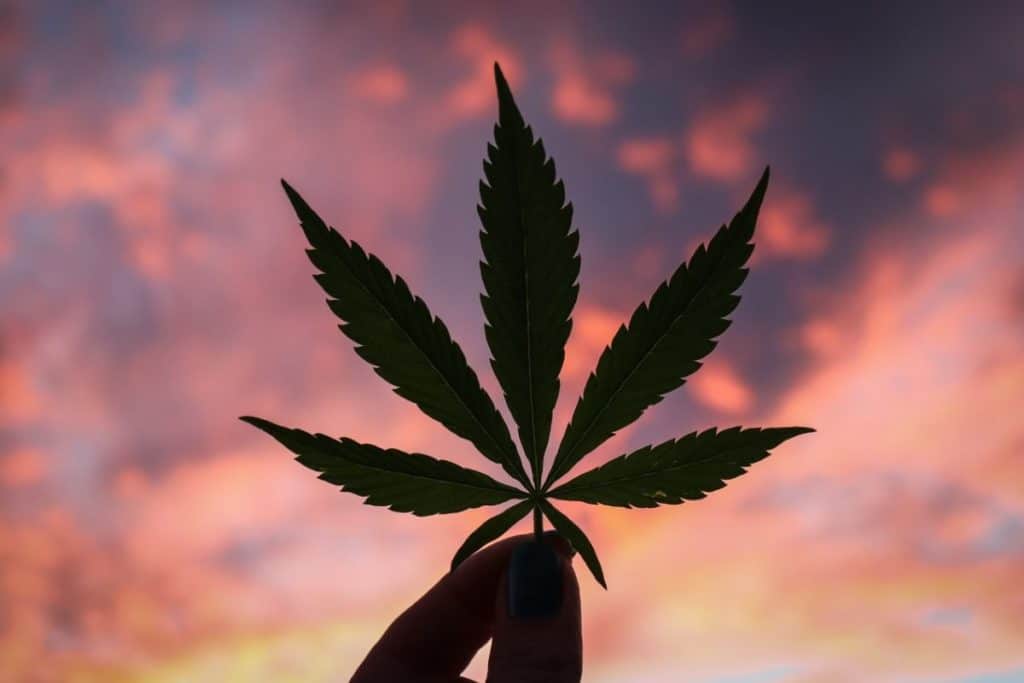“Wake and bake.”
Like a lot of things around cannabis (or marijuana), the process of waking up in the morning and immediately using cannabis seems funny. Google the phrase – you’ll get tips, memes, and blogs about waking up and getting high.
The interesting thing about the phrase is it describes addictive behavior perfectly. Waking up and taking a shot of whiskey first thing in the morning doesn’t seem nearly as harmless … but it’s the same basic pattern.
Cannabis lacks many of the social costs and pathologies of other, “harder” drugs. It’s still possible to develop a tolerance and addiction to the drug. And with use rates up amongst young and old alike, there’s also been a rise in cannabis use disorder … and cannabis withdrawal syndrome.
Withdrawal symptoms from cannabis are not as intense as withdrawing from benzodiazepines, alcohol, or opioids. It’s still challenging, though. Symptoms include mood swings, headaches, mood disorders and sleep disturbances. More troublingly, the American Psychiatric Association warns these symptoms can last for months, especially after daily cannabis use.
That’s precisely why cannabis detox is so critical. With professional help, anyone seeking to free themselves from cannabis addiction can do so in a safe, monitored environment where their withdrawal symptoms can be monitored and managed. This gives patients the best possible chance at a long, successful recovery from cannabis addiction.
Why Cannabis Is Addictive
According to the National Institute on Drug Abuse, the active ingredient in cannabis, tetrahydrocannabinol (THC), is similar to a brain chemical called anandamide.
This similarity allows THC to attach to areas on brain neurons called cannabinoid receptors, which in turn disrupts ordinary brain functions like memory, coordination, and reward. The reward system is particularly important; THC causes the brain to release amounts of dopamine, a brain chemical which creates feelings of pleasure and reward.
Normally, the brain dispenses dopamine at a low drip. THC causes larger amounts to release; this surge of dopamine instructs the brain to continue the behaviors which caused the surge, leading to addiction. With long-term cannabis use, these behaviors become far more ingrained, requiring more time to restore regular function.
Genes also play a factor in addiction. In 2019, Danish researchers identified a single gene variant which seems to increase the likelihood of cannabis addiction in some cannabis users. Earlier research has found additional genetic links to cannabis addiction.

What’s Cannabis Withdrawal Going To Be Like?
There’s a lot of factors at play when it comes to withdrawal. Everything from a patient’s physiology to the relative strength of the cannabis project they’re trying to stop using determines what cannabis detox is like. Genes even affect withdrawal.
In general, some of the deciding factors over withdrawal length and intensity include:
- The length of time cannabis has been used
- The amount of cannabis a person has been using
- What kind of cannabis product(s) a person has been using; THC extracts like wax, shatter and oil can be extremely potent, with high concentrations of THC
- If a person has a co-occurring mental disorder, aka a dual diagnosis. Schizophrenia can be a major complicating factor in cannabis detox
- A person’s individual genes and physical makeup
Time and amount are particularly important in how they affect withdrawal. THC is different from other addictive chemicals: it’s very soluble in fats. It’s why cannabis can stay in the body for a long time, showing up on drug tests even months after it was last used.
Cannabis Withdrawal: The First Step
Although milder than other substances, cannabis withdrawal is still a challenge and lasts a long time. THC, the active ingredient in cannabis, stays in the body’s fat for a long time. That’s why cannabis can still show up on drug tests even months after a person used it last. Also, like all drugs, a person’s individual physiology can determine how severe and long-lasting cannabis withdrawal can be.
In general, the most intense withdrawal symptoms start and last during the first week after cannabis use stops. They include:
- Headache
- Nausea
- Insomnia and sleep disturbances
- Mood swings and irritability
- Decrease in appetite
- Stomach cramps
- “Brain fog” – disorganized thinking
- Mild feelings of sadness
- Anxiety
- Strong drug cravings
- Sweating
As is the case with all substances, getting through the first week is critical. Many people attempting to stop their own cannabis use by detoxing on their own fail. Doing this important process in a monitored, clinical environment gives the best chance at lasting success.
The Second Step: Symptoms Get Less Intense
After the first crucial week, many of the symptoms remain … but they’re less intense:
- Headache
- Nausea
- Insomnia and sleep disturbances
- Mood swings and irritability
- Decrease in appetite
- Stomach cramps
- “Brain fog” – disorganized thinking
- Mild feelings of sadness
- Anxiety
- Strong drug cravings
- Sweating
The Third Step: Reduced Symptoms … But Still Present
Symptoms further reduce in intensity a month or so later. Lingering effects on sleep and appetite may remain, but they’re far milder than they were. Most physical symptoms should be gone, and the mental symptoms which may be lingering can be addressed in rehab.
Remaining symptoms may include:
- Headache
- Some irritability
- Intense dreams
- Persistent mental fog
- Appetite changes
- Mild drug cravings
- Sweating
With time and management, patients will learn how to further manage these symptoms as they continue their recovery. Detox isn’t the end – it is the first step in a long process towards sobriety.
Unfortunately, some patients may continue experiencing withdrawal symptoms thanks to a drug abuse-related syndrome still being studied.

PAWS: Post-Acute Withdrawal Syndrome
There has been an emerging field of study around post-acute withdrawal syndrome (PAWS). This not widely understood condition most often affects those recovering from alcohol, benzodiazepine, and opioid abuse, but it’s been noted in recovering users of all drugs.
According to an article published by the University of California, Los Angeles, PAWS may be caused by changes made to the brain during drug abuse. Among other things, drug abuse seems to lower the brain’s ability to respond to stress.
- Symptoms of PAWS may include:
- Mood swings and disorders
- Panic and anxiety
- Learning and problem-solving difficulties
- Social difficulties
- Obsessive-compulsive disorder
- Sleep issues
- Problems dealing with stress
These problems can persist for years, even well into a patient’s recovery. Thankfully, cannabis detox and recovery provides patients with medicines, coping mechanisms, and other tools to battle PAWS and keep their recovery long and successful. Also, PAWS is relatively rare in cannabis users.
Detox Is Just The First Step
Detox removes harmful substances from a person’s body; it isn’t a cure for addiction.
What it is, is a critical first step to a happier life. Detox also helps address the underlying issues which often drive addiction. With 24/7 monitoring and trained experts, detox gives patients a strong foundation for a long-lasting recovery.



